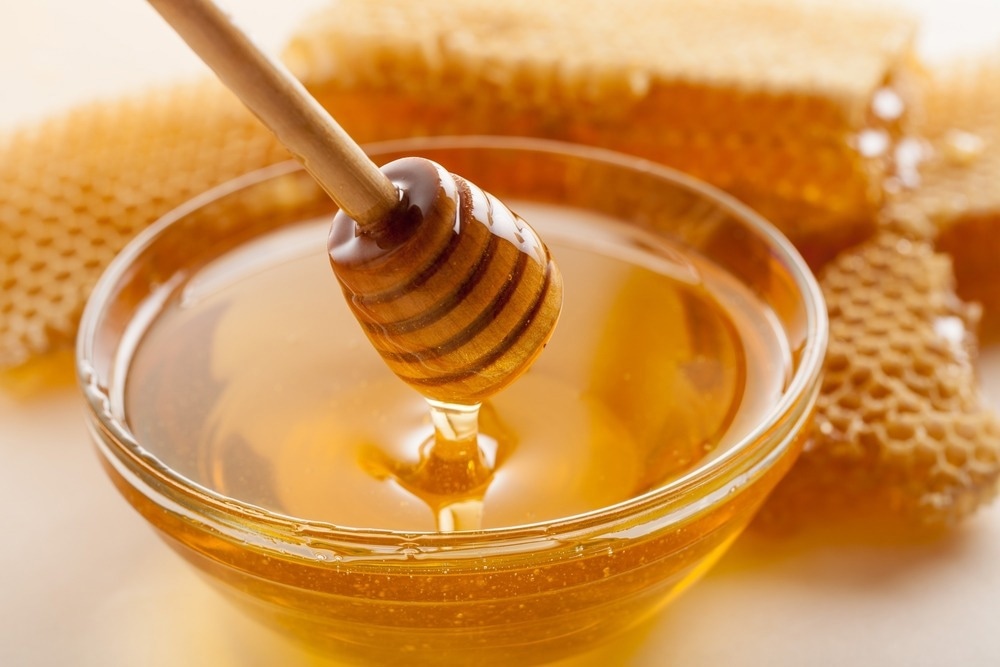In a paper published in the journal Scientific Reports, the capability of atom probe tomography to detect precipitation in frozen honey was shown with nanoscale spatial resolution.

Study: Nanoscale analysis of frozen honey by atom probe tomography. Image Credit: Billion Photos/Shutterstock.com
Applying this procedure to frozen biological samples may hugely influence biomolecular structure research.
Current State of Atom Probe Tomography
Atom probe tomography is a three-dimensional compositional mapping technology that uses sub-nanometer spatial resolution to investigate the chemical makeup of materials.
Atom probe tomography helps to determine how the arrangement of particular components influences the characteristics of a material.
Historically, atom probe tomography has been limited to metallic and ceramic materials. An emerging theme in atom probe tomography is obtaining improved knowledge of the fragmentation and evaporation behavior of soft materials.
Metals and semiconductors evaporate quite differently from organic materials. Depending on the measuring circumstances, organic matter evaporates in bigger chunks or even as entire molecules rather than individual atoms.
Mass peak overlapping resulting from this evaporation behavior hinders the peak identification process and leads to uncertainty in peak identification. Furthermore, it also restricts spatial resolution.
Measuring bigger molecule fragments does, however, permit the identification of structural components of larger biological molecules.
In their natural settings, many biological materials are yet to be studied by atom probe tomography. This means that alterations in the three-dimensional composition of the original structure may occur.
Understanding the Structure of Honey
Natural honey is a supersaturated solution composed of various simple and higher sugars dissolved in water. It is possible to undertake nanoscale studies of natural honey.
Honey is an organic substance produced by honeybees using plant secretions, plant nectar, or the discharge of plant-sucking insects.
The nectar is transformed using enzymes by converting larger sugars, particularly sucrose, into simple sugars like fructose and glucose, as well as through the partial evaporation of the present water.
Honey comprises simple sugars like fructose and glucose, double sugars like maltose and sucrose, enzymes, higher sugars, acids, and water.
The composition of honey varies based on geographic and botanical origins, bee species, climatic conditions, processing, and storage. Honey is hygroscopic in nature and may capture moisture from its surroundings.
Glucose is less soluble in water as compared to fructose and, as a result, has faster precipitation and crystallization. The ratio of glucose to fructose can predict the tendency of honey to crystallize, with a greater ratio resulting in quicker crystallization.
Research Methodology
In this paper, the team used organic honey to show how atom probe tomography could be used to quantify nanoscale precipitates inside frozen natural honey.
The team determined proper stoichiometric peak values and correctly identified the water content using various interpretation methodologies despite the overlapping mass signals of the prevalent molecular fragments CxOyHz and CxHy in sugar and (H2O)nH+ from water.
Finally, the researchers studied the spatial resolution capability of atom probe tomography using frozen honey to set the precedent of detecting organic molecules in a solution in three dimensions with nanoscale precision.
Important Findings of the Study
The team showed that atom probe tomography could perform a structural assessment of frozen soft matter specimens at the nanoscale level.
A comparison of the mass spectra of honey with those of pure water, glucose bulk, and saturated glucose solution was performed.
The mass spectra of honey were more comparable to those of glucose bulk than the mass spectra of saturated glucose solution. The reason for this was the extremely high sugar concentration, which was macroscopically represented in the high viscosity and resembled a solid rather than a liquid.
The two distinct phases of natural honey were distinguished and localized with the help of isocomposition surfaces along with a compositional profile based on their differing sugar contents.
Nearest-neighbor analysis and a cluster search technique could be used to verify the two distinct phases of honey. On average, the concentration of sugars found in the crystalline phase was 77.45 ± 1.24% (CxOyHz), while the water content was found to be 23.15 ± water-related peaks.
The cluster size in the region of interest was found to be 4.36 - 15.78 nanometers (nm). The volume of the respective clusters ranged from 12 to 567 nm3.
This study showed a novel analysis and localization approach for organic nanoscale structures inside frozen liquids.
Reference
Schwarz, T. M., Ott, J., Solodenko, H., Schmitz, G., & Stender, P. (2022). Nanoscale analysis of frozen honey by atom probe tomography. Scientific Reports, 12. Available at: https://www.nature.com/articles/s41598-022-22717-9
Disclaimer: The views expressed here are those of the author expressed in their private capacity and do not necessarily represent the views of AZoM.com Limited T/A AZoNetwork the owner and operator of this website. This disclaimer forms part of the Terms and conditions of use of this website.